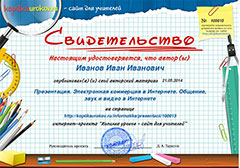ICT is considered to be one of the most important basic building block of a society. It is a need for every aspect of our life, and education is not an exception. The foreign English learners are using ICT to get more access to the information in all around the world. However, ICT's are essential tools in many educational institutions. The use of ICT increases the scope of teaching-learning process. It provides with new learning material. Thus, the Information Communications Technology (ICT) in foreign language learning and teaching has been the researchers' focus of attention. English language learning and teaching has to adopt and renew itself to be compatible with the globalized world. The purpose of the present paper is to highlight the positive effects of ICT in order to keep up with the modernized communities in the current digital world. To meet this end, some advantages, importance, and need of ICT in foreign language learning and teaching will be presented. Therefore, it is affirmed that using ICT in foreign language teaching will have positive effects on both the teachers and learners to help them in following up the modernized world which is full of new demands of technology.
Создайте Ваш сайт учителя Видеоуроки Олимпиады Вебинары для учителей
The positive Effect of ICT on the English Language
Вы уже знаете о суперспособностях современного учителя?
Тратить минимум сил на подготовку и проведение уроков.
Быстро и объективно проверять знания учащихся.
Сделать изучение нового материала максимально понятным.
Избавить себя от подбора заданий и их проверки после уроков.
Наладить дисциплину на своих уроках.
Получить возможность работать творчески.
Просмотр содержимого документа
«The positive Effect of ICT on the English Language»
Полезное для учителя
Распродажа видеоуроков!
1610 руб.
2690 руб.
1510 руб.
2510 руб.
1600 руб.
2660 руб.
1600 руб.
2660 руб.
ПОЛУЧИТЕ СВИДЕТЕЛЬСТВО МГНОВЕННО
* Свидетельство о публикации выдается БЕСПЛАТНО, СРАЗУ же после добавления Вами Вашей работы на сайт
Удобный поиск материалов для учителей
Проверка свидетельства
















